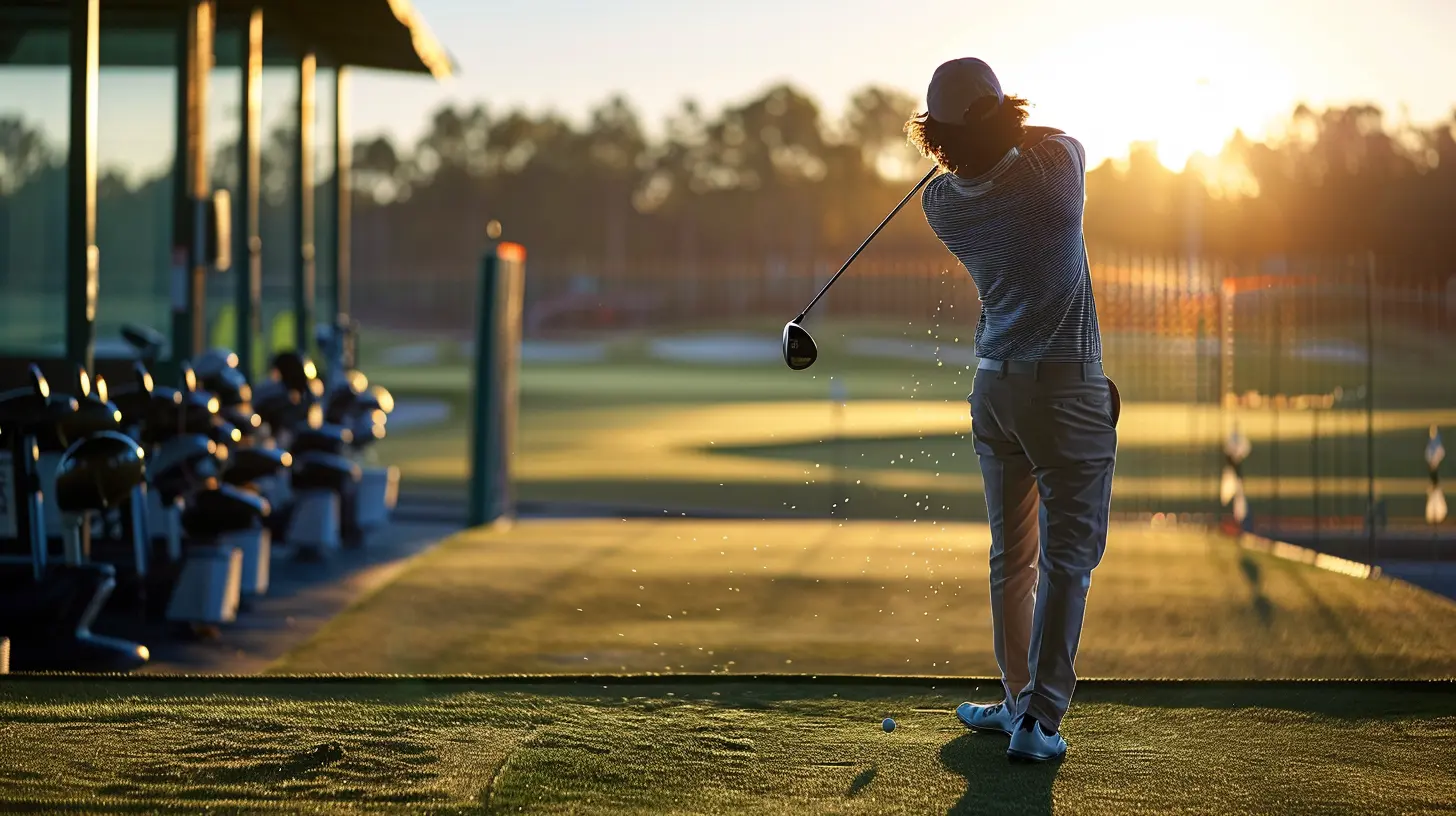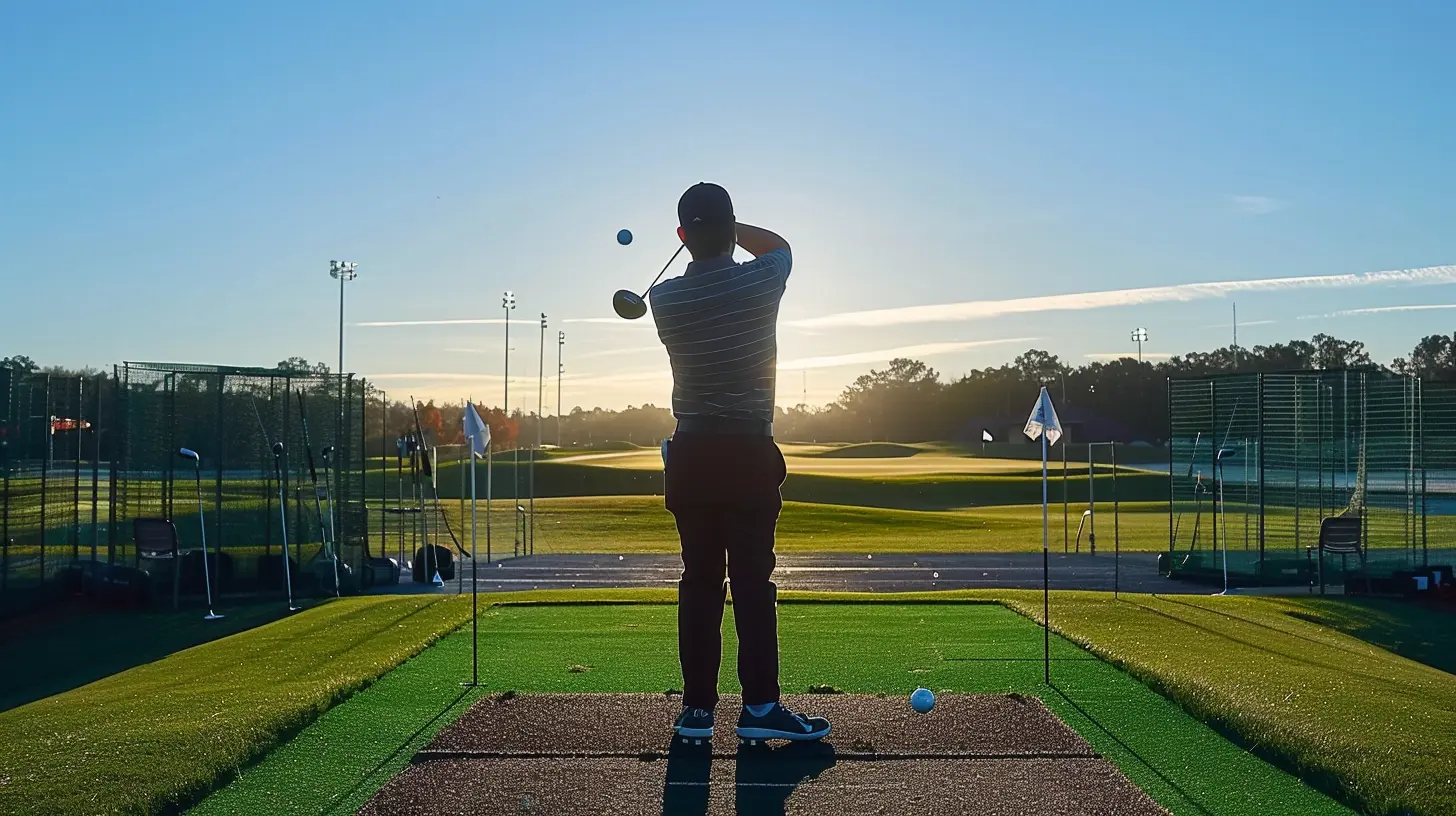How to Practice Effectively at the Driving Range
8 June 2025
Golf can be one of the most rewarding sports out there, but let's be real – it’s also one of the most frustrating. One day, you're hitting drives straight down the fairway like a pro, and the next day, you can't seem to get the ball off the tee. Sound familiar? That's why the driving range is your best friend. It’s the perfect place to work on your technique without the pressure of a real game.
But here’s the thing: simply showing up to the driving range and smashing balls into the distance isn’t going to help you improve. In fact, that could even make things worse. If you want to get better at golf, you need to practice with purpose. This article will guide you on how to practice effectively at the driving range so you can hit the course with confidence.

Why Practice Matters
Before we dive into the nitty-gritty, let’s talk about why practice is so crucial. Practicing golf isn’t just about mindlessly hitting hundreds of balls. It’s about building muscle memory, refining technique, and gaining a deeper understanding of your swing. Just like any other skill, repetition is key – but only if you’re repeating the right things.Think of it like learning a musical instrument. If you practice the wrong notes over and over, you're not going to sound any better. The same goes for golf. You need to practice the right techniques, and not just aimlessly swing away. Now, let’s get into some specifics on how to make your driving range sessions more productive.

Warm Up Before You Start
It’s tempting to head straight to the driving range and start blasting balls, but hold up – warming up is essential. Just like any other physical activity, your muscles need a chance to wake up before you start swinging.Start with Some Stretches
Begin with stretches that target your shoulders, back, and legs. Golf is a full-body sport, and you want to make sure every part of your body is loose and ready to go. Focus on stretching your hamstrings, hips, and especially your shoulders and wrists. These areas do most of the work during a golf swing.Take It Slow
Now that you’re all stretched out, don’t go straight for the driver. Start with some easy swings using a wedge or short iron. The goal here is to get a feel for your swing without putting too much pressure on yourself. Take a few light swings, paying attention to your form and the way your body feels.
Focus on Fundamentals
If you want to make real progress, you need to go back to basics. Even professional golfers spend time focusing on the fundamentals. This is where the magic happens.Grip, Stance, and Posture
These are the holy trinity of a solid golf swing. Before you hit any balls, take a moment to check your grip, stance, and posture.1. Grip: Are you holding the club correctly? Your grip should be firm but relaxed. Too tight, and you’ll lose flexibility, too loose, and you’ll have no control.
2. Stance: Your feet should be shoulder-width apart, with your weight evenly distributed between both feet. Feel balanced and stable.
3. Posture: Bend slightly at the hips, with a straight back. Don’t slouch or hunch over the ball. You want to feel athletic, not stiff.
Ball Position
Where you position the ball in your stance can make a huge difference. For shorter irons, the ball should be closer to the center of your stance. For longer clubs like your driver, place the ball more towards the front foot. Experiment with ball position to find what works for you.
Work on One Thing at a Time
One of the biggest mistakes golfers make is trying to fix everything at once. This can lead to overwhelm and frustration. Instead, focus on one aspect of your game during each practice session.Pick a Goal for Your Session
Maybe you want to work on your takeaway, or perhaps your follow-through needs some attention. Whatever it is, pick one area to focus on for the day. This will help you stay focused and make measurable improvements.For example, if you're struggling with consistency, spend your session working on your tempo. Slow things down and focus on making smooth, controlled swings. Once you feel like you’ve made progress in one area, then you can move on to the next.
Practice with Different Clubs
It’s easy to fall into the trap of only practicing with your driver or your favorite iron. But here’s the thing – you’re not going to use just one club on the golf course, so why only practice with one?Rotate Between Clubs
A good rule of thumb is to hit a few balls with each club in your bag. Start with your wedges and work your way up to your driver. This will help you get a feel for the different clubs and how they respond to your swing. Plus, rotating between clubs keeps things interesting and prevents boredom.Dial in Your Distances
One of the most important skills in golf is knowing how far you hit each club. When you’re at the driving range, pay attention to how far your shots are going. Make a mental note (or better yet, write it down) of the distances you’re hitting with each club. This will come in handy when you’re out on the course and need to select the right club for the shot.
Practice Your Short Game
It’s easy to get caught up in hitting long drives, but the reality is that the short game is where most golfers lose strokes. If you want to lower your scores, you need to spend time practicing your chipping, pitching, and putting.Chip and Pitch
If your driving range has a short game area, take advantage of it. Practice hitting short chips and pitches from different lies and distances. Focus on getting the ball to land softly and roll out towards the target. This will help you develop touch and control around the greens.Putting Practice
While you might not be able to practice putting at every driving range, if there’s a putting green available, spend some time there. Work on your stroke, aim, and distance control. Putting is all about feel, and the more you practice, the better you’ll get.Simulate Course Conditions
When you’re at the range, it’s easy to get into a rhythm of hitting ball after ball with no real thought behind it. But that’s not how golf works in the real world. On the course, every shot is different, and you need to be able to adapt.Visualize the Course
One way to make your practice more effective is to pretend you’re playing a round of golf. Visualize each hole, and hit shots as if you were on the course. For example, imagine you’re standing on the tee box of a par 4. Hit your driver, then switch to an iron for the approach shot. This will help you practice under more realistic conditions.Vary Your Targets
Instead of hitting every shot to the same target, pick different targets for each shot. This will force you to adjust your aim and think about where you want the ball to go. It also makes practice more engaging and fun.
Take Breaks and Stay Fresh
It’s tempting to hit ball after ball without taking a break, but this can lead to fatigue and poor form. Remember, quality is more important than quantity.Focus on Quality Over Quantity
If you find yourself getting tired or frustrated, take a break. Walk around, stretch, or grab some water. When you come back, you’ll feel more refreshed and ready to focus on making good swings.Stay Positive
Golf can be frustrating, but don’t let a few bad shots get you down. Stay positive and remind yourself that progress takes time. Each practice session is an opportunity to get better, even if it doesn’t always feel like it in the moment.Conclusion
Practicing at the driving range doesn’t have to be a mindless activity. By setting goals, focusing on fundamentals, and practicing with purpose, you can make real progress in your golf game. Whether you’re working on your driving, your short game, or just trying to get more consistent, the key is to practice smarter, not harder. So, the next time you hit the range, try out some of these tips and watch your game improve.And remember: golf is a journey, not a destination. Enjoy the process, have fun, and keep swinging!
all images in this post were generated using AI tools
Category:
GolfAuthor:

Umberto Flores
Discussion
rate this article
3 comments
Nym Cooper
Effective driving range practice focuses on consistency, technique, and setting specific goals for improvement. Stay disciplined.
June 13, 2025 at 12:49 PM

Umberto Flores
Thank you for your insights! Consistency and goal-setting are indeed key to maximizing driving range practice.
Alexander Wright
Great tips! Practicing at the driving range can really elevate your game. I loved the advice on focusing on specific skills. Can't wait to try these strategies on my next visit. Keep up the good work!
June 11, 2025 at 3:18 AM

Umberto Flores
Thank you! I'm glad you found the tips helpful. Enjoy your next practice session!
Alana McKellar
Great tips! Remember, consistency and focus at the driving range can transform your game. Every swing brings you closer to your goals!
June 10, 2025 at 12:27 PM

Umberto Flores
Thank you! Consistency and focus are indeed key to improvement. Happy practicing!



